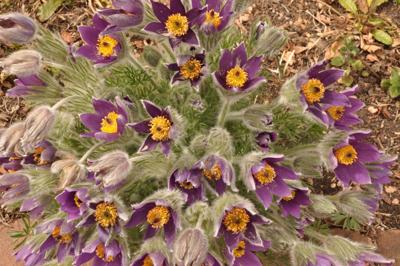There’s always plenty to do in the garden during March. This year, because of a dramatic temperature drop last fall, the to-do list will be even longer.
Temperatures plummeted from 58 degrees one day to 12 degrees the next. The weather changed so rapidly that deciduous trees might not have transitioned normally through the two-stage process of dormancy and chilling.
As we move into spring, the lingering effects of that cold snap will become apparent. Signs of freeze damage will be black, shriveled shoots or buds. Prune the dead twigs and branches; do not fertilize.
Conifers revealed damage immediately after the sudden weather change. If your trees were affected, they will show signs of scorching with needle tips that turned white, gray, silver or straw-colored. The freeze-burned needles will not green; however, over time, new needles will mask the damaged ones.
Other garden chores next month include:
• Prune Clematis jackmanii in early March before the plant comes out of dormancy. This cultivar of clematis blooms on new wood every year and, if left alone, will become spindly with decreased blooms. Prune stems 9 inches to 12 inches above ground with a clean, straight cut. Prune to just above two strong buds. In subsequent weeks, as new growth appears, apply a balanced 10-10-10 fertilizer and train the new stems around a support.
• As soon as ground can be worked, till in an inch or two of compost or aged manure into vegetable garden soil. If you’re going to start a new perennial garden, dig out any sod or weeds and work in the same amount of compost or aged manure.
• To get to know your garden, have your soil tested. For more information, visit soiltestinglab.colostate.edu.
Plant: In mid-March, plant peas and sweet peas, soaking the seeds overnight.
Fall-bearing raspberries can be planted now. Varieties include Heritage, Fall Gold, Fall Red, September, Pathfinder or Trailblazer.
Small bare root trees and shrubs as well as bare root roses can be planted from mid-March until late spring. Choose a time when three or four consecutive mild days are expected. To give the plants a good start, soak the roots overnight in a bucket of water.
Cool-season vegetables such as radishes, spinach, arugula, lettuce and onions can go into the prepared garden bed toward the end of the month.
Indoors, start seeds of cold-tolerant annuals such as impatiens, ageratum and lobelia.
Lawn: Now is an ideal time to core aerate the yard or have it done by a qualified lawn service. Make sure the soil is moist before aerating to ensure 3-inch plugs. Leave plugs on the yard; they will dissipate quickly, adding organic matter to your starved soil.
Tools: Replace the motor oil in the lawnmower and sharpen its blade. If hand tools weren’t cleaned last fall, do it now.
Other maintenance: Rake and clean up the yard and gardens.
The El Paso County Extension is operating remotely due to COVID-19. Submit questions to csumg2@elpasoco.com. Follow on Facebook at Colorado Master Gardeners — El Paso County.






 Your Privacy Choices
Your Privacy Choices